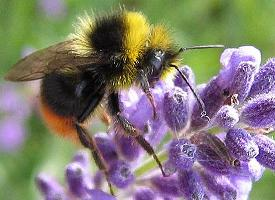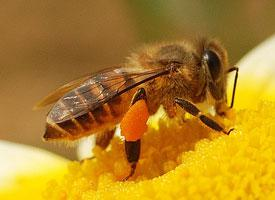
Poids et mesures
| Longueur | de 9 à 10 mm |
|---|
Description de l'animal
The Dwarf Honey Bee, scientifically known as Apis florea, is a fascinating species of small bees that play a crucial role in the pollination of wild flora and cultivated crops across their native range. This species is predominantly found in the tropical and subtropical regions of Asia, extending from the Arabian Peninsula through the Indian subcontinent to Southeast Asia. Their adaptability to various ecosystems, from dense forests to urban gardens, showcases their ecological significance and resilience.Characterized by their diminutive size, workers of the Apis florea species typically measure about 7 to 10 millimeters in length. They possess a reddish-brown to black body, with lighter bands on the abdomen, which is a common trait among honey bees. Their wings are relatively large in proportion to their body size, enabling them to forage over considerable distances. Unlike their larger relatives, such as the Apis mellifera (Western honey bee) or the Apis cerana (Asian honey bee), Apis florea nests are relatively small and open, often built on the branches of shrubs and trees. These nests are unique, featuring a single comb suspended in the air, which makes them more vulnerable to predators and environmental factors but reflects the species' remarkable adaptability and survival strategies.
The social structure of the Dwarf Honey Bee colonies is fascinating, comprising a single queen, a few hundred to a couple of thousand workers, and, during the breeding season, males known as drones. The queen is the sole egg-layer in the colony, while the workers perform a myriad of tasks including foraging for nectar and pollen, nursing the brood, constructing and maintaining the comb, and defending the nest. Communication within the colony is sophisticated, involving a combination of pheromones, tactile signals, and the famous "waggle dance," a method used by forager bees to inform their nestmates about the direction and distance of food sources.
Apis florea is a key pollinator, contributing to the biodiversity of their habitats and the productivity of agricultural areas. Their foraging behavior is crucial for the pollination of a wide variety of plants, including many that are economically important to humans. Despite their small size, their role in the ecosystem is monumental, helping to maintain the health and diversity of plant communities.
However, like many pollinators, Dwarf Honey Bees face threats from habitat loss, pesticide exposure, and climate change. Their open nesting habit makes them particularly vulnerable to environmental changes and human disturbances. Conservation efforts are essential to ensure the survival of this species and the continuation of their ecological services. Understanding the biology, behavior, and ecology of Apis florea is key to developing strategies for their protection and the preservation of the broader biodiversity they support.
Animaux similaires
Nouvelles photos d'animaux
Top 10 des animaux
- Dolphin gull (Leucophaeus scoresbii)
- Diana monkey (Cercopithecus diana)
- Moustached guenon (Cercopithecus cephus)
- Galápagos tortoise (Geochelone nigra complex)
- Japanese macaque (Macaca fuscata)
- Russian tortoise (Testudo horsfieldii)
- Stone loach (Barbatula barbatula)
- Greek tortoise (Testudo graeca)
- Common flying dragon (Draco volans)
- Vendace (Coregonus albula)


